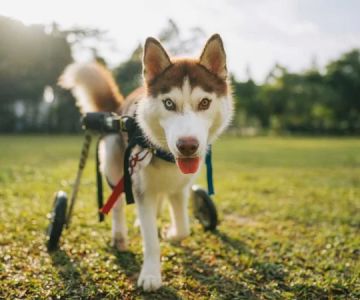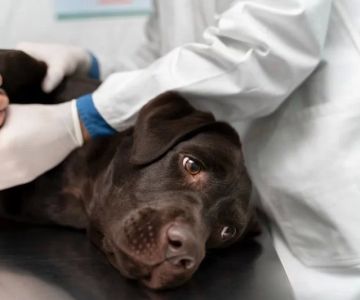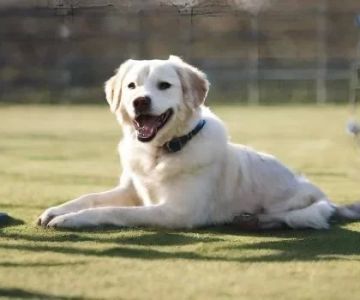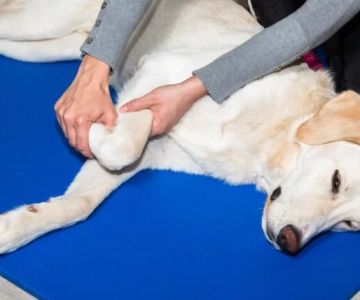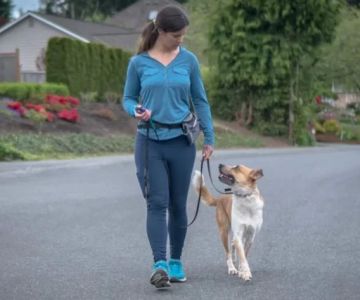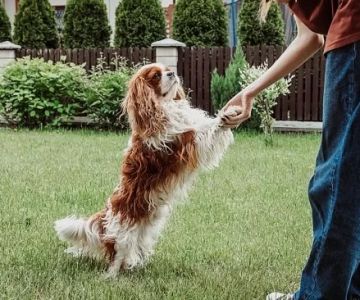How to Train Dogs to Greet People Politely: Tips and Techniques
- Why Polite Greetings Matter for Dogs
- Training Techniques for Polite Greetings
- Common Challenges and Solutions
- The Benefits of Training Your Dog to Greet Politely
- Additional Tips and Recommendations
Dogs are known for their boundless energy and affection, but sometimes their excitement can result in less-than-polite greetings when meeting new people. Whether your dog jumps up on visitors or is overly eager, training them to greet people politely is an essential skill for both the dog and the owner. In this article, we'll discuss why polite greetings matter, how to train your dog to greet people appropriately, and the benefits of fostering good dog etiquette.
1. Why Polite Greetings Matter for Dogs
When dogs greet people without proper etiquette, it can lead to awkward or uncomfortable situations. Visitors may feel overwhelmed by a dog jumping up, or your dog could unintentionally hurt someone in their excitement. Moreover, many people are afraid of dogs, and an overly enthusiastic greeting can exacerbate their fear.
Training your dog to greet people politely creates a more enjoyable and safe experience for everyone. It helps to foster positive interactions with strangers, family members, and even other pets. Polite greetings can also improve your dog’s socialization skills and make them more well-behaved in various settings.
2. Training Techniques for Polite Greetings
Training your dog to greet people politely is a process that takes time, consistency, and patience. Here are some effective techniques that can help:
2.1 Teach "Sit" or "Stay" Commands
One of the best ways to ensure your dog greets people politely is to teach them the "sit" or "stay" command. When your dog learns to sit calmly as someone approaches, they will be less likely to jump or become overly excited.
Start by practicing these commands in a quiet setting, then gradually introduce distractions, such as a family member entering the room or a friend ringing the doorbell. Reward your dog with treats and praise when they follow the command correctly.
2.2 Positive Reinforcement
Reward-based training is highly effective in teaching dogs polite behavior. When your dog greets someone calmly without jumping, reward them immediately with a treat or praise. Over time, your dog will associate calm greetings with positive reinforcement, encouraging them to repeat the behavior.
It’s important to remain consistent with rewards and praise. Don’t reward your dog if they greet someone inappropriately, like by jumping up. Instead, redirect their behavior by asking them to sit, and reward them when they comply.
2.3 Socialize Your Dog
Socialization is key to teaching your dog how to interact with people and other animals in a controlled manner. The more exposure your dog has to different people, environments, and situations, the more likely they are to learn appropriate behavior.
Take your dog to dog-friendly places like parks, pet stores, or outdoor cafes. Allow them to meet new people in calm settings, and reinforce polite greetings with treats and praise. This practice will help your dog learn how to approach people politely without becoming overly excited.
3. Common Challenges and Solutions
Training your dog to greet people politely can present some challenges. Here are some common obstacles and solutions to help you along the way:
3.1 Jumping Up
Jumping is a common issue when teaching dogs to greet people politely. Some dogs may jump out of excitement or to get closer to someone. The best solution is to turn away from your dog when they jump and ignore them until they settle down.
Once your dog is calm, ask them to sit and reward them for doing so. Consistency is key when dealing with jumping—be sure to reinforce the sit command every time they greet someone.
3.2 Fear or Aggression
Some dogs may feel fearful or anxious around new people, which can lead to reactive or aggressive behavior. If your dog shows signs of fear or aggression, it's important to address the issue before attempting to train them to greet people politely.
Consider consulting a professional trainer or behaviorist who can help with desensitizing your dog to new people. Gradual exposure and positive reinforcement can help ease your dog’s anxiety, allowing them to interact in a calm manner.
4. The Benefits of Training Your Dog to Greet Politely
Training your dog to greet people politely offers numerous benefits, both for you and your dog:
4.1 Improved Socialization
A well-trained dog that greets people politely is more likely to be comfortable in social situations. They’ll enjoy meeting new people and other dogs, which helps to reduce anxiety and fear of unfamiliar environments.
4.2 Positive Impressions
When your dog greets people politely, it leaves a positive impression on others. Visitors will appreciate the calm and friendly demeanor of your dog, and it can enhance their overall experience with you and your pet.
4.3 Strengthened Bond with Your Dog
Training your dog is a great way to strengthen the bond between you and your pet. As you work together to learn new commands and behaviors, you’ll develop mutual trust and understanding, creating a more harmonious relationship.
5. Additional Tips and Recommendations
Here are a few more recommendations for training your dog to greet people politely:
- Be patient and consistent—training takes time, so don’t expect instant results.
- Use a leash during training to maintain control over your dog’s movements and ensure they follow commands.
- Keep training sessions short and enjoyable to prevent your dog from getting bored or frustrated.
For additional help with your dog’s training, consider visiting a professional dog trainer or utilizing online resources that offer expert advice and tips.
If you're looking for more pet care resources, check out Hidden Brook Veterinary for the best products and services for your furry friends. Whether you're looking for training aids, pet food, or medical care, we've got you covered.


